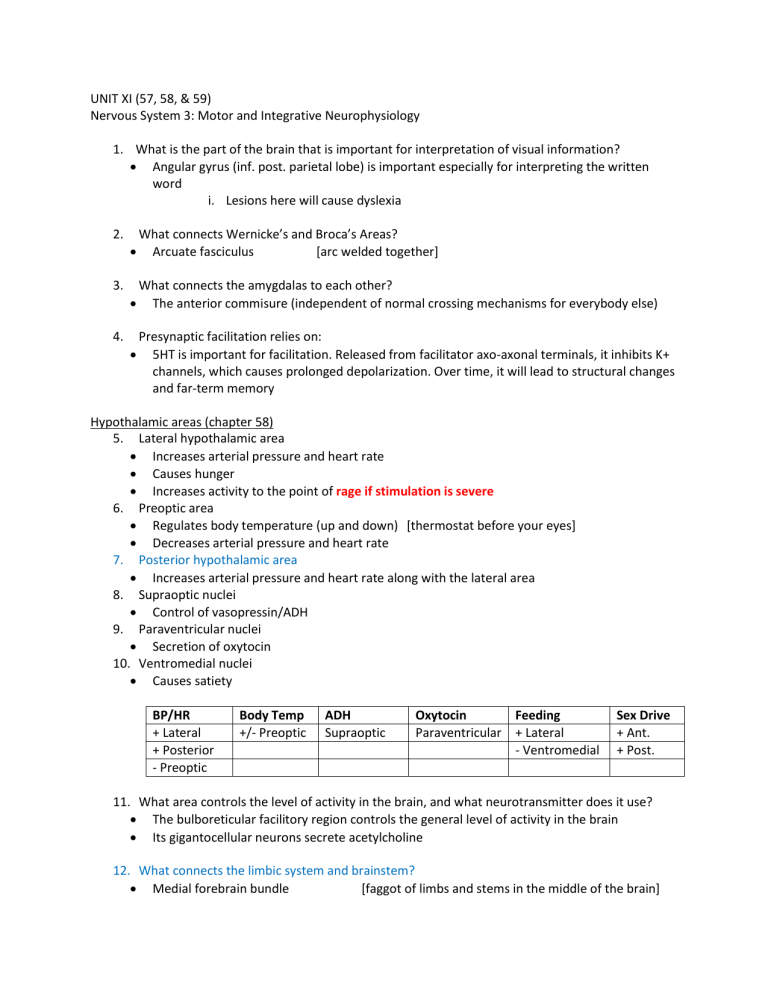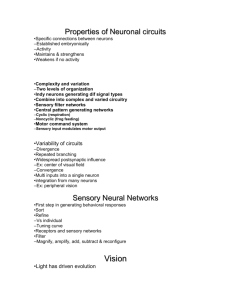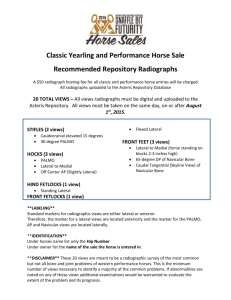physio unit 11 stub Ch57 Ch58 Ch59 [3-20

UNIT XI (57, 58, & 59)
Nervous System 3: Motor and Integrative Neurophysiology
1.
What is the part of the brain that is important for interpretation of visual information?
Angular gyrus (inf. post. parietal lobe) is important especially for interpreting the written word i.
Lesions here will cause dyslexia
2.
What connects Wernicke’s and Broca’s Areas?
Arcuate fasciculus [arc welded together]
3.
What connects the amygdalas to each other?
The anterior commisure (independent of normal crossing mechanisms for everybody else)
4.
Presynaptic facilitation relies on:
5HT is important for facilitation. Released from facilitator axo-axonal terminals, it inhibits K+ channels, which causes prolonged depolarization. Over time, it will lead to structural changes and far-term memory
Hypothalamic areas (chapter 58)
5.
Lateral hypothalamic area
Increases arterial pressure and heart rate
Causes hunger
Increases activity to the point of rage if stimulation is severe
6.
Preoptic area
Regulates body temperature (up and down) [thermostat before your eyes]
Decreases arterial pressure and heart rate
7.
Posterior hypothalamic area
Increases arterial pressure and heart rate along with the lateral area
8.
Supraoptic nuclei
Control of vasopressin/ADH
9.
Paraventricular nuclei
Secretion of oxytocin
10.
Ventromedial nuclei
Causes satiety
BP/HR
+ Lateral
Body Temp ADH
+/- Preoptic Supraoptic
Oxytocin Feeding
Paraventricular + Lateral
Sex Drive
+ Ant.
+ Posterior
- Preoptic
- Ventromedial + Post.
11.
What area controls the level of activity in the brain, and what neurotransmitter does it use?
The bulboreticular facilitory region controls the general level of activity in the brain
Its gigantocellular neurons secrete acetylcholine
12.
What connects the limbic system and brainstem?
Medial forebrain bundle [faggot of limbs and stems in the middle of the brain]
13.
What are the two strongest areas for punishment and escape tendencies?
The Periaqueductal Gray
Periventricular hypothalamus and thalamus (diencephalon)
14.
What does bilateral amygdala destruction cause?
Kluver-Bucy syndrome: fearlessness, hypersexuality, curiosity
15.
Ablation of the posterior orbital frontal cortex causes:
Insomnia [astronaut sleeping in orbit]
16.
Ablation of the cingulate gyri leads to:
Unstoppable rage! [the cingulate gyri basically keep the HULK in check]
17.
Sleep centers (most to least important):
Raphe nucleus, NTS, various parts of diencephalon
18.
A naturally-occuring substance in the brain that causes sleep
Muramyl peptide
19.
What are the characteristics of alpha waves?
Occur during quiet conciousness, at a frequency of 8-13 Hz
20.
What are the characteristics of theta waves?
Occur in children, during stages 2 & 3 sleep, disappointment, and degernative states. Their frequency is 4-7 Hz
21.
What does a petit mal EEG look like?
“spike and dome” pattern is seen in petit mal (“absence”) seizures







